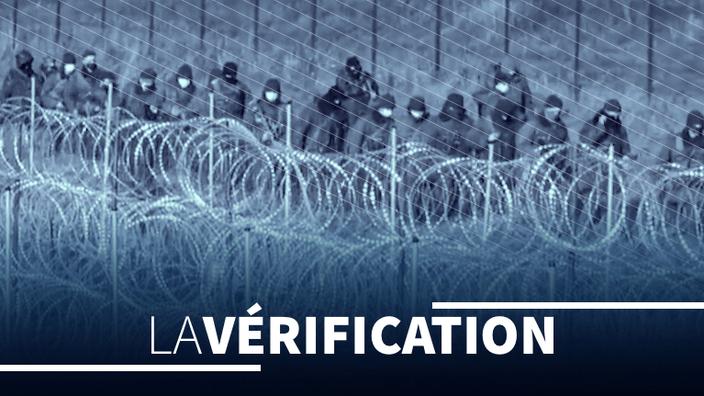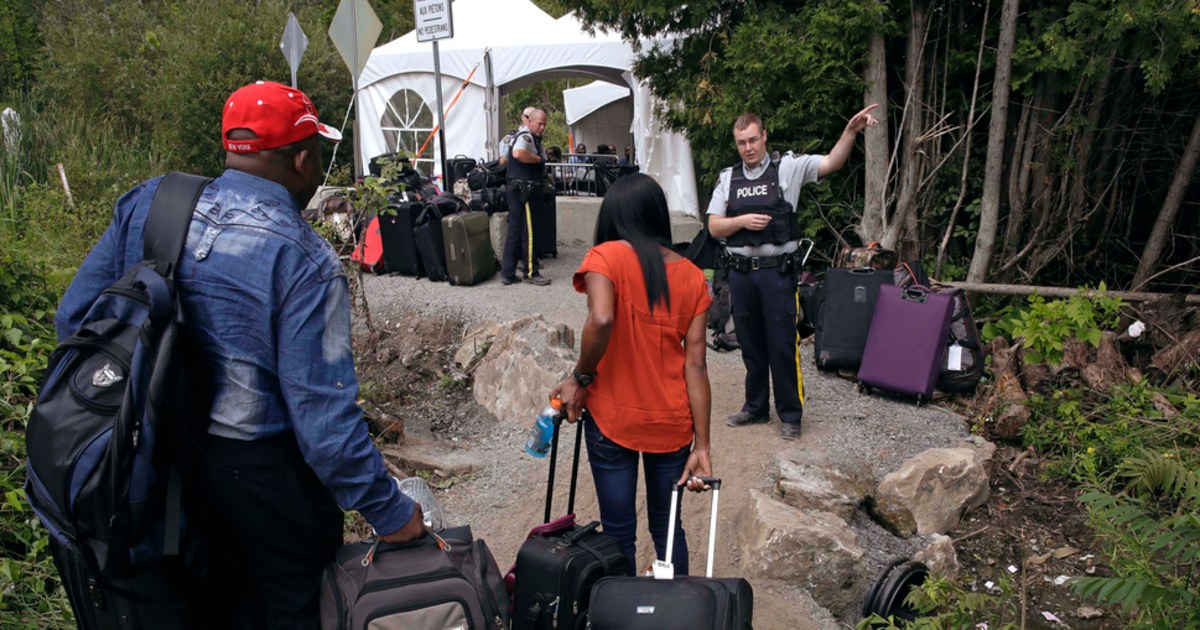THE QUESTION.
Since August, several thousand illegals have gathered on the Polish-Belarusian border. In response, the Polish government urgently dispatched military personnel and erected miles of barbed wire. To definitively materialize this border, Warsaw will build a wall of 180 kilometers, that is to say half of the total border, which should be started "
at the latest
" in December. The construction of a wall in Europe to stop migratory flows is nothing new. In August, Greece completed the construction of a 40-kilometer wall along its border with Turkey, complementing an already existing 12-kilometer wall. In 2015, in the midst of the migration crisis, Hungary also built an "
anti-immigrant fence
»175 kilometers, 4 meters high.
Read alsoMigrants in Belarus: Poland, lonely guardian of its eastern border
CHECKS.
It is extremely difficult to measure the exact effect of a wall on migratory flows. “
By definition, it is technically more complicated to cross the Greek-Turkish border on foot. The wall limits, in fact, migratory flows, but does not regulate them,
”explains Jean-Thomas Lesueur, Managing Director of the Thomas More Institute. “
The question of efficiency is complicated. If you put a wall in a place where there are many passages, this will restore a form of order, but also displace mobility, smugglers or contraband, as we have seen at the American-Mexican border
” , continues Damien Simonneau, lecturer at INALCO.
In reality, a physical barrier may well stop migratory flows at a given moment, or even order them. But the question arises of its long-term effectiveness. In 2015, the “
Balkan route
” saw the crossing of 800,000 illegal immigrants. The erection of a physical border at the Hungarian and then Croatian border has drastically reduced the number of entries. In 2016, according to Frontex, more than 373,000 illegal immigrants arrived in Europe, including 180,000 by the eastern route. However, migratory flows continued to Europe. This drop can also be attributed to the migration agreement between Turkey and the EU which provides in particular for stricter control of the Greek-Turkish border.
Migration flows also continued from the Mediterranean
via
Italy. The construction of a wall can therefore regulate a flow of migrations at a given moment in a defined territory, but displaces it via other routes. “
The situation in Poland is a geopolitical failure. It is legitimate to keep your border, but that does not resolve the fundamental issues of cooperation with the countries of departure and transit
, ”analyzes Jean-Thomas Lesueur.
“
The efficiency of the walls is relative.
For thirty years, Europe has invested in security and migration has not diminished because security does not respond to the reasons for migration which are relational, economic, political, etc.
”, continues Damien Simonneau.
In fact, in 2020, according to the OECD, migration fell by 30% because of the pandemic.
Domestic policy issue
If walls are relatively effective, why do leaders build them? "
There is an issue of internal policy, most European peoples are resistant to mass immigration
", assures Jean-Thomas Lesueur. In response to public opinion, some governments erect "
physical barriers
" to prove their action in the face of a phenomenon.
Especially since the European institutions seem to divide. This week, the President of the Council Charles Michel blurted out: "
we are also having the debate on the question of the financing by the European Union of physical infrastructures
". "
And we think that it will also be necessary to clarify the capacity, for the European Union, to show solidarity or not,
" he added. “
There is a long-standing commitment from the Commission and the European Parliament not to fund barbed wire and walls,
” recalled Ursula von der Leyen, President of the European Commission. "
There is a de facto ambiguity in European law which recognizes that States have the possibility of shielding their borders, but this security factor must be consistent with respect for the right to asylum,
”concludes Damien Simonneau.
In summary,
it is very difficult to attribute numerically an effectiveness to the walls on the decrease in migratory flows.
Specialists see efficiency at a given moment, but the flows are shifting to other routes.















